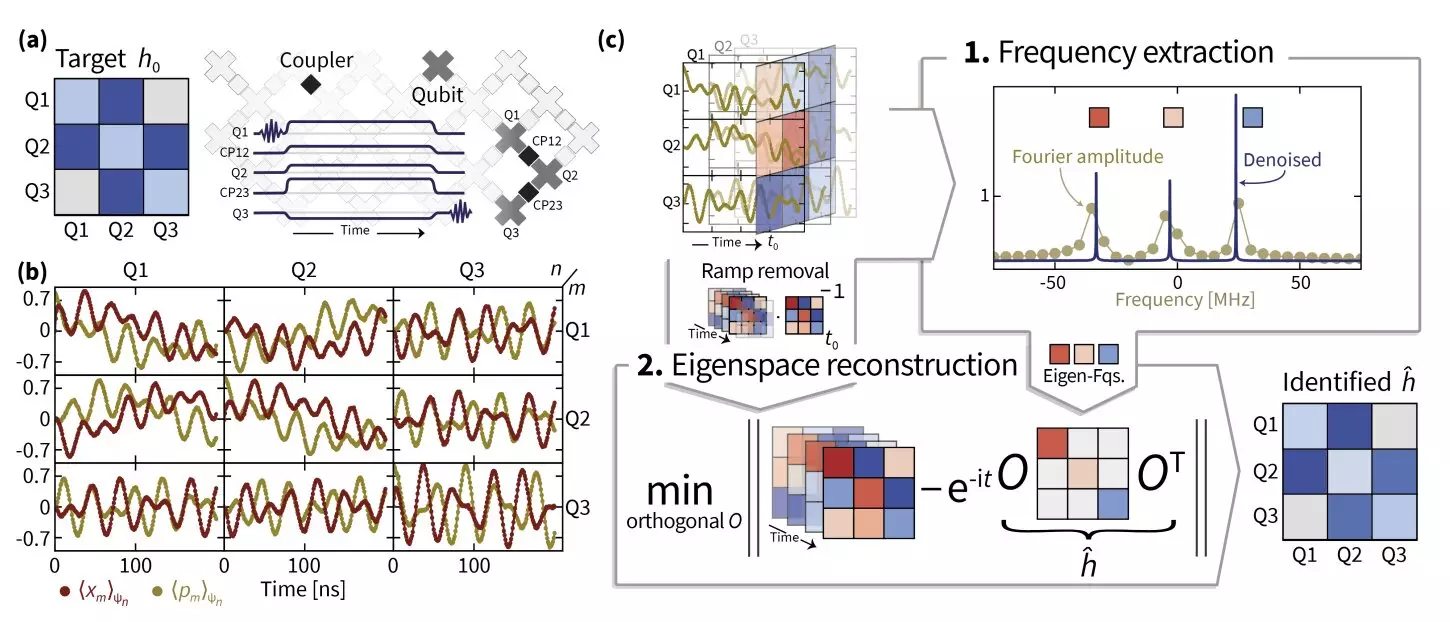In an era where quantum computing promises to outpace classical computation, researchers at institutions such as Freie Universität Berlin, the University of Maryland, NIST, Google AI, and Abu Dhabi are making strides towards leveraging superconducting quantum simulators for more accurate modeling of complex quantum systems. Their recent endeavors, detailed in a paper on arXiv, aim to provide robust solutions to estimate Hamiltonian parameters crucial for understanding bosonic excitations within these systems. This research marks a significant turning point in the field of quantum simulation, as it seeks to transcend the limitations imposed by conventional computational methods.
The motivations behind this remarkable research initiative stem from practical challenges faced by the Google AI team while calibrating their Sycamore quantum chip. Jens Eisert, the paper’s lead author, recounts how a call for assistance during a conference evolved into a multifaceted research collaboration. While the problem initially seemed tractable, the complexity of the Hamiltonian operator’s frequency recovery became apparent, highlighting the intricate nature of quantum systems. By appealing to expert minds in the form of Ph.D. students Ingo Roth and Dominik Hangleiter, the team initiated a journey that intertwined theory and practice over several years.
Central to their groundbreaking work are the sophisticated methodologies employed for Hamiltonian learning. The scenario demanded a dual approach to tackle the limitations inherent in earlier techniques. The researchers utilized superresolution, a cutting-edge technique for enhanced eigenvalue estimation, to effectively deduce the Hamiltonian frequencies vital for accurate simulation. This allowed them to recuperate the eigenspaces of the Hamiltonian operator—a task that would require intricate manifold optimization techniques. Unlike traditional optimization that operates in Euclidean spaces, manifold optimization considers the parameters as living in a curved, smooth space, resonating with the complexities of quantum mechanics.
Eisert reveals that their quest for robust estimates necessitated incorporating multiple ideas into their methodology. The intricacies of switching the Hamiltonian processes on and off, which are rarely instantaneous, played a pivotal role in their success. Any naive assumptions around Hamiltonian evolution could lead to misleading results. By the end of their research, they debuted TensorEsprit, a novel method for signal processing tailored for robust data recovery, significantly contributing to their advancement in identifying Hamiltonian parameters from larger superconducting qubit systems.
The outcomes of this research signal promising potential for scalable solutions applicable to expansive quantum processors. Initial test results indicate that their methods can withstand the scrutiny of larger systems, laying the groundwork for future inquiries into Hamiltonian approximations in quantum mechanics. The implications of this research stretch beyond theoretical boundaries, with prospects of driving forward the development of next-generation quantum technologies.
Eisert’s team envisions applying their methodologies to interactive quantum systems and exploring tensor networks in cold atomic scenarios, further broadening the horizons of quantum exploration. The dialogue surrounding Hamiltonians—often taken for granted—gains new significance as researchers confront the reality that understanding these operators is paramount for effective predictive modeling in quantum frameworks.
The focal point of this dialogue is the realization that knowledge of the Hamiltonian is not inherently guaranteed, despite being a fundamental postulate in quantum mechanics. Their explorative approach emphasizes shaping experimental frameworks that faithfully characterize these Hamiltonians and supports broader applications in quantum simulation.
Furthermore, contributions from this research extend into shaping future advancements in analog quantum simulations. By unveiling the capabilities to recreate complex quantum systems under highly controlled laboratory conditions, researchers can examine material properties and behaviors from a new vantage point. This innovative outlook on quantum simulation facilitates a depth of research possibilities, enhancing our comprehension of fundamental quantum phenomena.
Eisert’s assertion that the field of Hamiltonian learning will grow in importance aligns with the growing interest in quantum technologies. As scientists unravel the complexities of Hamiltonian parameters through refined methodologies, the approach to analog quantum simulation will undoubtedly shift, leading to unprecedented insights into a realm that has long remained enigmatic.
As researchers overcome the challenges within Hamiltonian learning, their pursuits not only advance our theoretical understanding but also lay foundational work for next-gen applications, echoing the critical nature of harnessing quantum systems for scientific and technological progress. The journey that began with an urgent call for help has burgeoned into a transformative exploration into the very fabric of quantum mechanics—a testament to human ingenuity in the face of complexity.


Leave a Reply